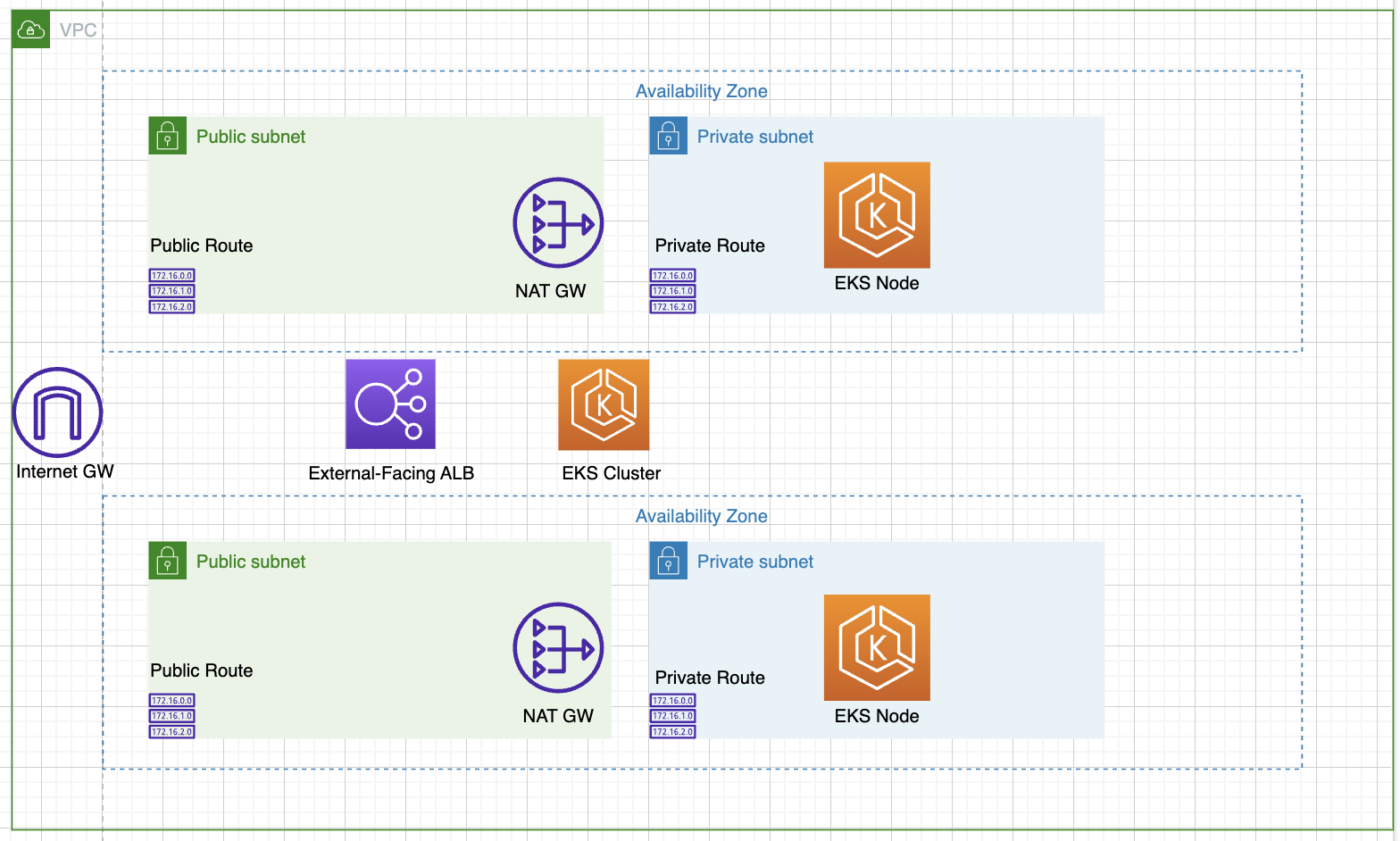Repository for aws elastic kubernetes service project. Infrastructure terraform configuration files present. This project is still a work-in-progress.
A yaml configuration file is included that is compatible with Microsoft Azure DevOps platform. The pipeline configuration runs a development pipeline that only triggers with branches that are not equal to main and a production branch that triggers when a merge occurs.
- .attachments
- Contains images and other miscellaneous items for project
- Infrastructure
- Stores Terraform configuration files
- test_manifests
- Local yaml manifest files with starter deployments and services for testing cluster.
- yaml
- Stores Microsoft Azure Devops Services CI/CD pipeline configuration files in yaml format
- Install latest version of AWS eksctl
- Install kubectl version 1.23.5
- Intall latest version of aws cli
- Links:
Example commands to enable/authenticate IAM Role with eksctl to interact with cluster and view resources on AWS Console:
eksctl create iamidentitymapping \
--cluster <cluster-name> \
--region us-east-1 \
--profile <aws-profile> \
--arn arn:aws:iam::123456789012:role/<role-name> \
--group system:masters \
--username k8s-admin
- Within "--profile" this refers to locally configured aws cli profile to interact with correct AWS account. This name is subject to change depending on your local aws cli config profile.
eksctl get iamidentitymapping \
--cluster <cluster-name> \
--region us-east-1 \
--profile <aws-profile>
To deploy eks cluster autoscaler replace role arn for autoscaler and cluster name for node group tags within test_manifests/eks-autoscaler.yaml
- An IAM role has already been created for eks cluster autoscaler. Refer to infrastructure/iam.tf
- Documentation:
- To interact with a cluster configure the local kubeconfig by running the following command:
aws eks update-kubeconfig --region <region> --name <cluster-name> --profile <local aws profile>
- The above command will update the kubeconfig within ~$HOME/.kube
aws eks update-kubeconfig \
--region=us-east-1 \
--name=<cluster-name> \
--profile=<aws-profile>
source <(kubectl completion bash)
echo "source <(kubectl completion bash)" >> ~/.bashrc
alias k=kubectl
complete -o default -F __start_kubectl k
- To learn how to configure local aws profiles visit:
- For a full list of AWS ALB annotations visit:
- Official AWS Ingress Conroller GitHub and documentation:
- For all documentation regarding helm:
- AWS Autoscaler documentation:
- Describe cluster resource
kubectl describe <api-resource>
- Get cluster resource
kubectl get <api-resource> -o wide
or
kubectl get <api-resource> -o yaml
- Create and delete pods
kubectl run nginx --image=nginx
kubectl delete pod nginx
- Create and delete deployments
kubectl create deployment nginx-deploy --image=nginx --replicas=2
kubectl delete deployment nginx-deploy
- Expose a deployment or pod cluster object
kubectl expose <api-resource> --name=http-svc --port=80 --type=NodePort
.
├── LICENSE
├── README.md
├── infrastructure
│ ├── addons.tf
│ ├── backend.tf
│ ├── cluster.tf
│ ├── data.tf
│ ├── iam-test.tf
│ ├── iam.tf
│ ├── ingress-controller.tf
│ ├── locals.tf
│ ├── oidc.tf
│ ├── output.tf
│ ├── policies
│ │ └── AWSLoadBalancerController.json
│ ├── provider.tf
│ ├── scripts
│ │ └── user-data.sh
│ ├── variables.tf
│ └── vpc.tf
├── test_manifests
│ ├── aws-test.yaml
│ ├── deployment.yaml
│ ├── nginx-deploy.yaml
│ ├── private-lb.yaml
│ └── public-lb.yaml
└── yaml
├── infrastructure-ci.yaml
├── manifests-cd.yaml
└── templates
├── destroy-infrastructure.yaml
└── infrastructure-cd.yaml
- EKS
- ALB

